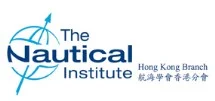Neftegaz
archive > archive presentations
The NEFTEGAZ-67/YAO HAI collision
Narrow Channels: a recipe for injustice?
Harry Hirst FNI
Master Mariner and Partner, Ince & Co.
The relevance of the latest evening seminar hosted by the Hong Kong branch of the Nautical Institute was clearly illustrated by the numbers who attended. More than seventy members and guests assembled to hear Harry Hirst’s analysis of Rule 9 of the Collision Regulations as it applied to the collision between Neftegaz-67 and Yao Hai.
Harry began by pointing out that Rule 9 does not define a narrow channel or fairway, and there is no guidance on this anywhere in the Colregs. The Mariner’s Handbook provides some help in its Glossary of Terms, where the meaning of the words “channel” and “fairway” as used in British Admiralty charts and publications is set out, but it is invariably the courts which have to decide such matters after a collision has occurred. Previous court cases have adopted what he described as the ‘Willmer Test’ – that a narrow channel is defined by the way seamen generally navigate in the area. This of course, is no help to a mariner who enters an area for the first time, but Captain Kulemesin of the offshore supply vessel Neftegaz-67 had regularly transited the area where the collision occurred, and was quite certain it was not a narrow channel. Indeed, on occasion he had been ordered by the VTC to alter course to port and leave the buoyed area to permit the passing of a deep-draught vessel. He believed it was open water, and that the buoys marked the deep-water route for vessels of deep draughts of 16 metres or more, such as laden Capesize bulk carriers heading for the nearby power station. Other vessels could safely operate outside the buoys, and regularly did so.
Yao Hai, on the other hand, claimed the entire stretch of water was considered by the local pilots to be a narrow channel where Rule 9 applied.
In the event, the vessels collided near the entrance to the buoyed area. Neftegaz-67 sunk rapidly and eighteen of the crew perished.
During the case, the prosecution had some difficulty deciding whether the entire area was a narrow channel, or a fairway containing a narrow channel, or whether the narrow channel was simply the area between the buoys which mark the deep water route. They eventually settled on the area between the buoys. The court agreed, and Captain Kulemesin was found guilty of endangering the lives of others and sentenced to 38 months imprisonment.
The sentence was reduced to 18 months on appeal, but the case then went to the Court of Final Appeal, where the visiting judge was Lord Clarke of Stone-cum-Ebony, a senior English Admiralty Judge.
Lord Clarke said that whether a stretch of water is a narrow channel is a question of fact, to be determined by reference to all relevant factors, including the experience of the mariner, the information on the chart, the Admiralty Sailing Directions and local regulations. The opinion of the Director of Marine, who regulates Hong Kong waters, would be of no assistance unless it was widely disseminated.
In the event, the Hong Kong authorities are silent on the stretch of water involved, and Harry Hirst asked whether it is reasonable to assume therefore, that it is open water. As he pointed out, nothing says it is not; and in a busy port like Hong Kong, where statutory fairways are clearly marked and have been established in all the major narrow channels in the approaches to Hong Kong Harbour, and where almost every square metre of water is regulated in some way, is it likely that the authorities omitted to do the same in this stretch of water if they intended that Rule 9 should apply? The courts apparently believe it is.
Harry also questioned the application of Rule 9 to the Yao Hai which was not even in the buoyed area, and pointed to cases which suggested that as a matter of good seamanshipshe should have taken action to avoid an encounter with the Neftegaz 67 which was actually in the channel
Finally, our speaker pointed out that, since the expert witnesses in the case were divided over the status of the waterway, was that not an indication that it was not unreasonable for Captain Kulemesin to hold the views that he did? And since his views accorded with those of the Director of Marine, should he have been found guilty ‘beyond a reasonable doubt’ for thinking he was not in a narrow channel?
Captain Kulemesin remains in prison, and his earliest release date is January 2014. The Hong Kong Branch has lent its support to Captain Kulemesin’s petition to the Chief Executive of the Hong Kong SAR to commute his sentence, but the wheels of bureaucracy are turning slowly, and it is unlikely a decision will be reached before Captain Kulemesin completes his sentence.
In conclusion, Harry pointed out that Professor Craig Allen, author of Farwell’s Rules of the Nautical Road
The presentation generated a great many questions, and the debate continued over the complimentary supper and drinks provided by the branch.

